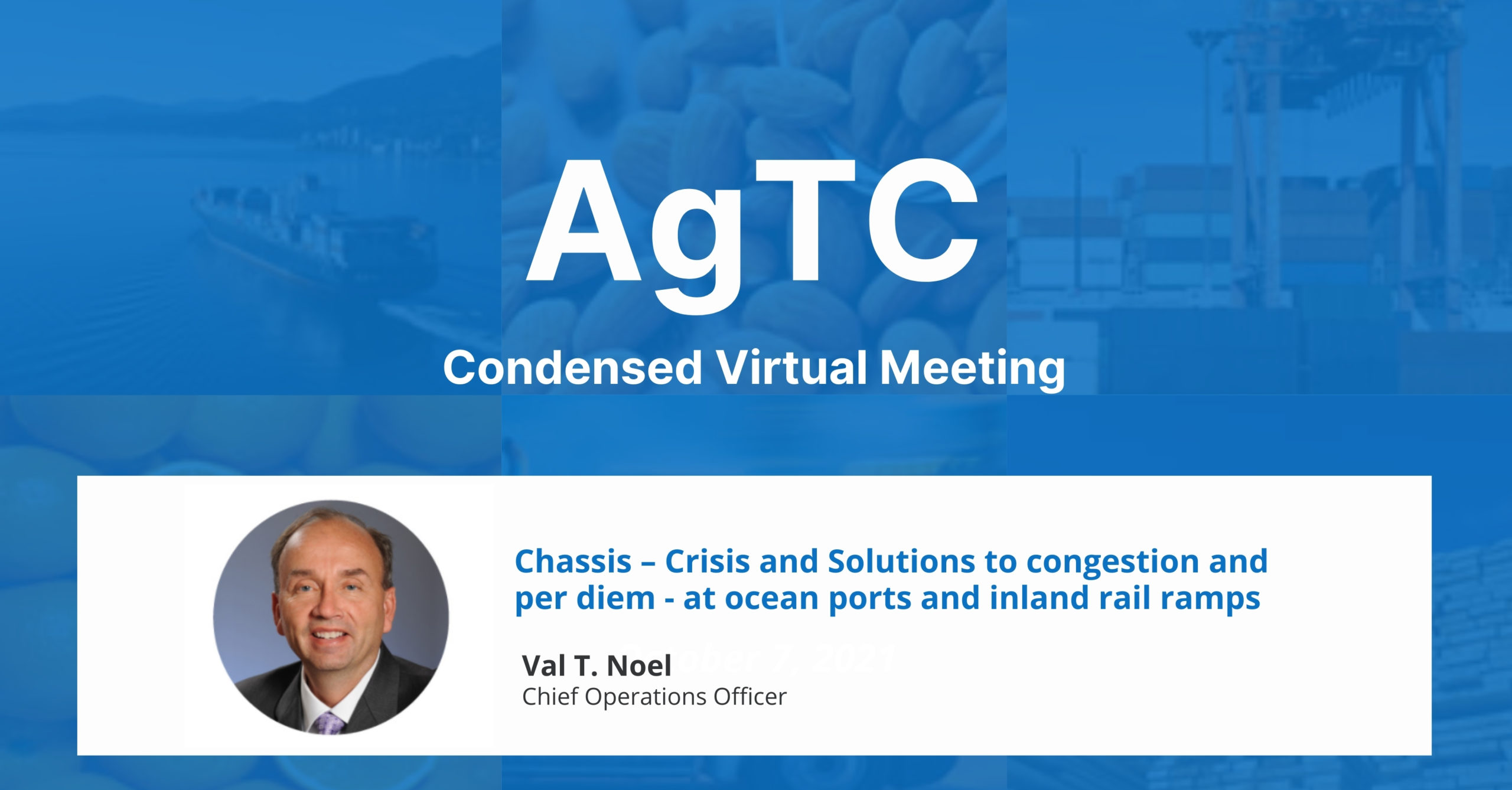AgTC Virtual Meeting
TRAC Offers Recommendations to Keep Cargo Moving
October 13, 2021

On October 7, the Agriculture Transportation Coalition (AgTC) held a condensed virtual meeting focused on supply chain challenges and solutions on how to meet them from experts across the cargo transportation sector. Participants included shippers, truckers, the port community, political representatives and chassis providers. AgTC is the primary voice of agriculture in U.S. transportation policy.
Val Noel, Chief Operations Officer at TRAC Intermodal, addressed the group on chassis demand pressures and potential solutions to improve the flow of goods and the supply of chassis. The current international intermodal supply chain for both import and export trade has been challenged as a result of the record volumes over the last fourteen months, which show no sign of abating in the near future.
Val attributed the supply chain disruptions across the country to many factors impacting the movement of goods including increased import volumes, vessel/train discharges, bunching of cargo, street dwell, export demand needs, labor shortage across the entire supply chain, and equipment challenges. Despite these hurdles, he reiterated that each segment of the transportation supply chain has been focused on moving cargo in the face of rising demand. For TRAC, this means taking steps to help improve the flow of goods by:
- Making significant investments in equipment (TRAC has invested more than $1 billion in expanding and modernizing its marine chassis fleet and the investment in 2021 is up 20% year-over-year to meet the demand pressure.)
- Adding capacity and re-positioning chassis to pinch point locations
- Reducing out-of-service units as quickly as possible
Val expressed his gratitude to the M&R employers across the intermodal network as well as the the ILA and ILWU labor organizations for their hard work and responsiveness in keeping out-of-service units at record lows.
The presentation included tangible actions for companies across the supply chain to improve fluidity, near- and long-term:
1. Extended Gate Hours
Increasing gate hours at marine terminals, a widely discussed topic, will require providing the drivers with a return location for the containers to make it successful. “We need to improve the ability for the drayage community to return equipment either loaded or empty in an effort to recycle the chassis for the next move,” Val proposed.
2. Turn Time / Street Dwell
Street dwell has negatively impacted the chassis sector. The increase has doubled or even tripled in some markets. “There needs to be better visibility into cargo needs and when cargo will be unloaded in an effort to prevent chassis from dwelling both on and off terminal,” he explained.
3. Off-Dock Chassis Operations
Establishing a business model in our country that promotes the use of chassis for pickup and delivery services versus being used on marine terminals would help free up the equipment. The solution would require a collaborative effort to include labor, drayman, terminal operators and chassis providers to ensure the new operations model is efficient and affordable for all parties.
4. IPI Cargo Movement
IPI cargo needs to be more closely coordinated with all parties to avoid moving cargo congestion from port locations to interior points. Our industry needs a more comprehensive and coordinated plan to ensure that cargo moved inland will be consumed, the box/chassis will be freed up for either an export shipment or empty return.
5. Chassis Manufacturing
Equipment procurement continues to be a challenge as domestic chassis manufacturing adjusts to the increase in demand. Supporting domestic chassis manufacturers as they work to revitalize production domestically will help boost capacity to meet growing demand levels long term.
6. Supply Chain Visibility
Finally, Val reiterated the industry’s need to provide better visibility on all import/export moves from first to last mile so that our industry can more efficiently use the resources available.
To learn more about the Agriculture Transportation Coalition (AgTC), visit https://agtrans.org/
